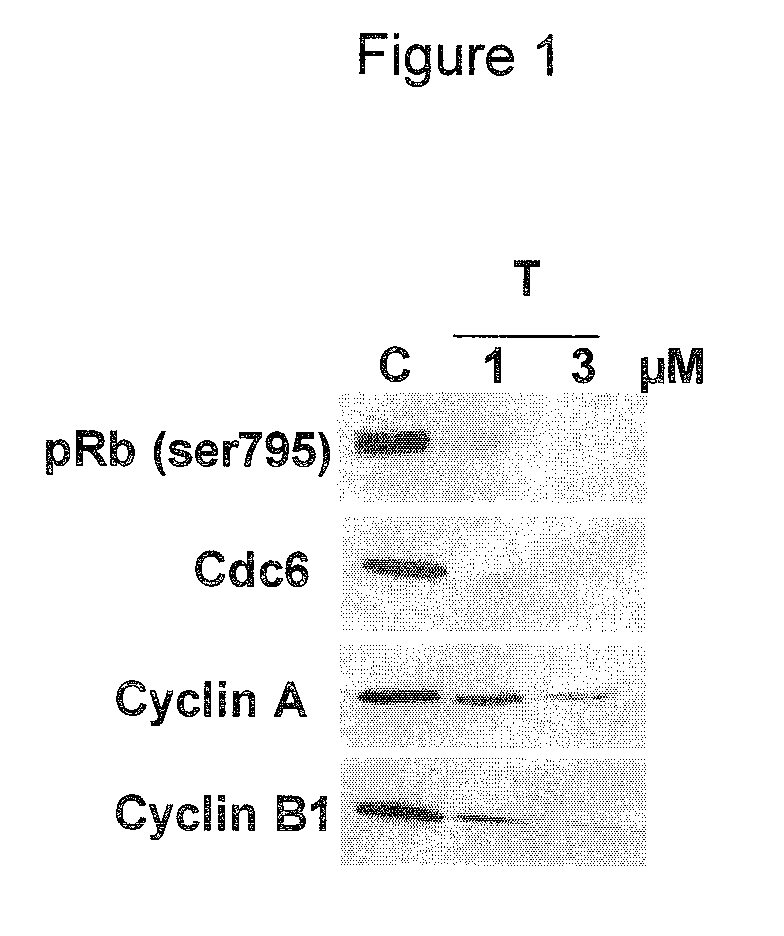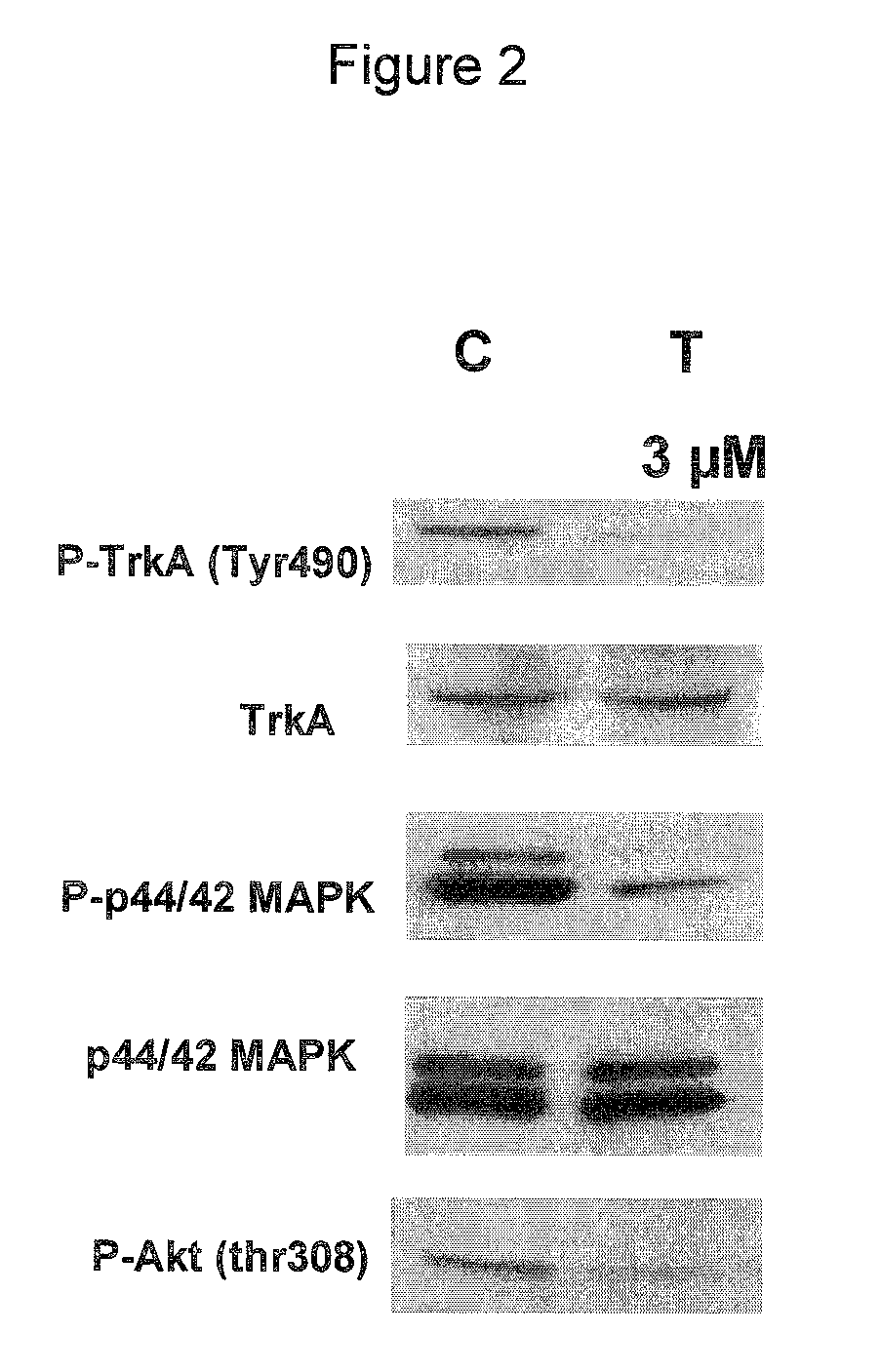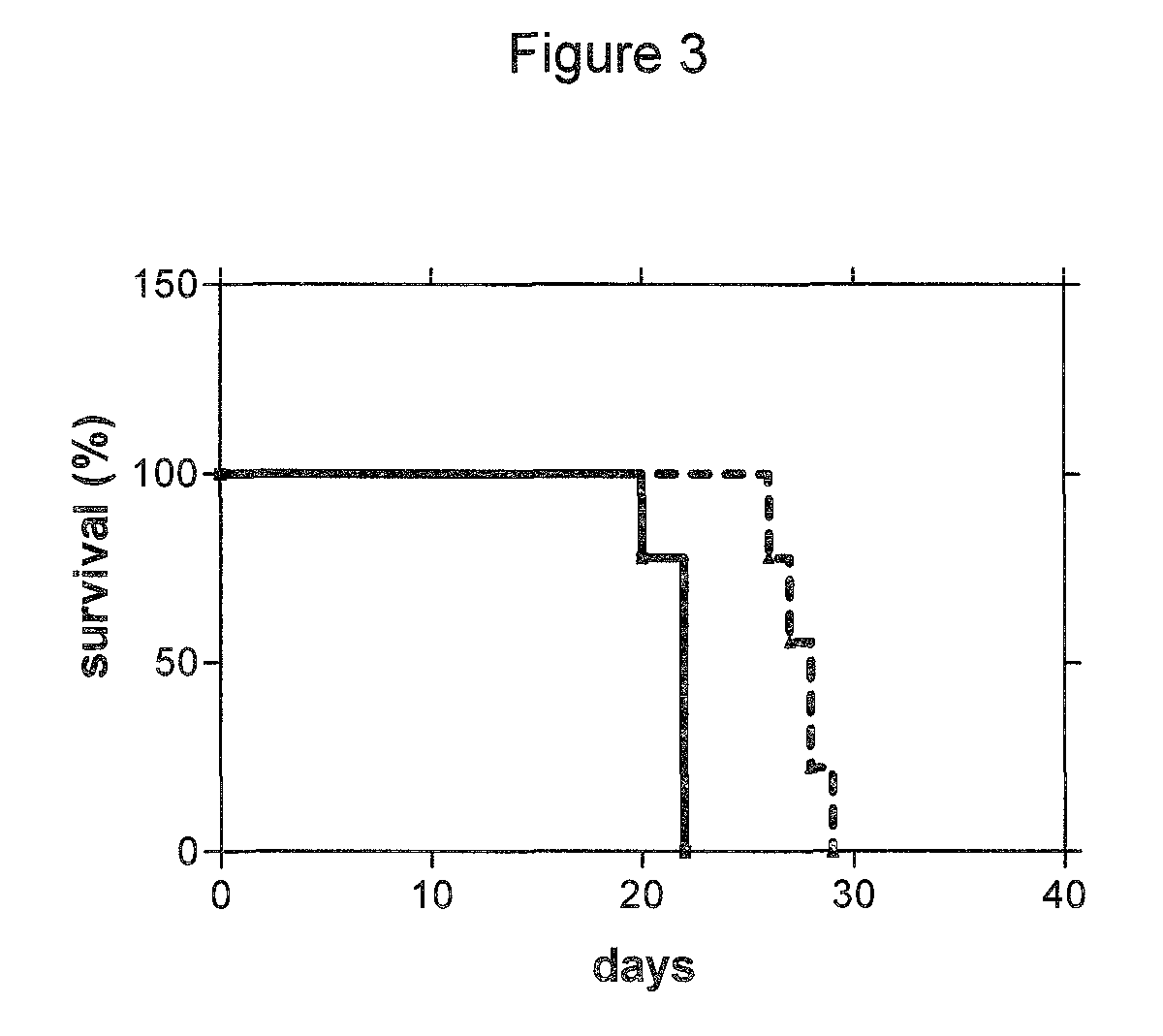Use of CDK inhibitor for the treatment of glioma
a glioma and cdk technology, applied in the field of glioma patients' treatment, can solve the problems of unmet medical needs for new potent agents, prolong disease-free survival but not overall survival, and increase the risk of glioma proliferation, so as to inhibit the proliferation of glioma
- Summary
- Abstract
- Description
- Claims
- Application Information
AI Technical Summary
Benefits of technology
Problems solved by technology
Method used
Image
Examples
example 1
Scintillation Proximity Assay (SPA) Format for Kinases
[0042]This assay allows measurement of the inhibition of the kinase activity of a specific enzyme obtained with test compound. Different kinases can be tested in parallel.
[0043]A biotinylated substrate is trans-phosphorylated by a specific kinase in the presence of ATP including a γ33-ATP tracer. At the end of the reaction the phosphorylated substrate is then captured using Streptavidin-coated SPA beads. A dense 5M CsCl solution is added and the mixture is incubated for four hours. This causes the SPA beads to float to the top of the CsCl solution containing the unincorporated radiolabelled ATP. The extent of phosphorylation is measured using a β-counter.
[0044]In these assays, the compound of formula (I) showed a potent inhibitory activity on the CDK2 / Cyclin A complex (IC50=45 nM), showing activity also towards closely related CDKs, i.e. CDK1, CDK4, and CDK5 ((IC50=398, 160 and 265 nM, respectively), but also towards Thropomyosin...
example 2
Levels of Compound of Formula (I) in the Brain
[0045]Han Wistar rats were treated for 6 consecutive days with an oral administration of compound of formula (I) at the dose of 60 mg / kg. The animals were sacrificed on day 6 at 2 and 6 hours after dosing. Brain and plasma were taken at the sacrifice time. Blood was put in heparinised plastic tubes, kept in ice-water bath, and then centrifuged (10 minutes, 1200 g at 4° C.). Brain and plasma samples were stored in a freezer at −80° C. until analysis. The levels of compound of formula (I) were analysed by LC / MS / MS.
[0046]Brain levels of the compound of formula (I) resulted to be on average 88.9 and 69.4 nmoles / gr of tissue at 2 and 6 hours post-dosing. The corresponding levels in plasma are 9.8 and 8.4 nmoles / mL, respectively. Assuming a density equal to 1, brain levels of the compound of formula (I) are 6.1-9.6 times higher than plasma levels.
example 3
Determination of Radioactivity Distribution in Brain by Autoradioluminography Following Administration of [14C]-Labelled Compound of Formula (I) to Sprague Dawley Rats
[0047][14C]-labelled compound of formula (I) (specific activity of 5 μCi / mg, prepared in house) was administered by single oral administration (20 mg / kg as maleate salt, approximately 3.7 MBq / kg, 100 mCi / kg as radioactive dose) to 6 male albino rats (Sprague Dawley rats from Charles River Italy; body weight at the dosing 259-273 g).
[0048]Animals were sacrificed 2, 6 and 24 hours after administration (2 animals at each selected time) and the radioactivity distribution of compound-related material was evaluated in intact brain, after excision. The autoradioluminography method was used to evaluate the quantitative radioactivity distribution in the brain.
[0049]The radioactivity distribution was also evaluated in blood and plasma collected from the animals after sacrifice. The radioactivity levels in blood and plasma were d...
PUM
| Property | Measurement | Unit |
|---|---|---|
| median survival time | aaaaa | aaaaa |
| median survival time | aaaaa | aaaaa |
| pH | aaaaa | aaaaa |
Abstract
Description
Claims
Application Information
 Login to View More
Login to View More - R&D
- Intellectual Property
- Life Sciences
- Materials
- Tech Scout
- Unparalleled Data Quality
- Higher Quality Content
- 60% Fewer Hallucinations
Browse by: Latest US Patents, China's latest patents, Technical Efficacy Thesaurus, Application Domain, Technology Topic, Popular Technical Reports.
© 2025 PatSnap. All rights reserved.Legal|Privacy policy|Modern Slavery Act Transparency Statement|Sitemap|About US| Contact US: help@patsnap.com



